前言
我們?cè)赮ouTube上看到有人使用機(jī)械臂實(shí)現(xiàn)物體跟蹤功能的視頻時(shí),深受啟發(fā),對(duì)這個(gè)項(xiàng)目產(chǎn)生了濃厚的興趣,并決定獨(dú)立開(kāi)發(fā)一個(gè)類(lèi)似的程序。
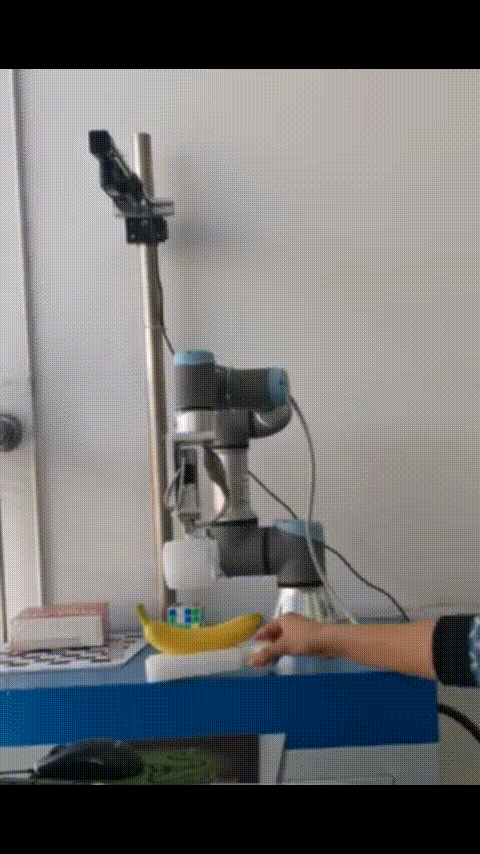
我們的目標(biāo)是開(kāi)發(fā)一個(gè)能夠準(zhǔn)確識(shí)別和跟蹤物體的機(jī)械臂系統(tǒng),以便在實(shí)際應(yīng)用中發(fā)揮作用,這個(gè)項(xiàng)目涉及到許多技術(shù)和算法,包括視覺(jué)識(shí)別、手眼協(xié)同和機(jī)械臂控制等方面。
機(jī)械臂的介紹 mycobot280-JetsonNano
操作使用的機(jī)械臂是myCobot280-Jetson Nano
這是一款大象機(jī)器人公司生產(chǎn)的小六軸機(jī)械臂,以JetsonNano為微處理器,ESP32為輔助控制,UR協(xié)作形結(jié)構(gòu)。myCobot280 JetsonNano,本體重量1030g, 負(fù)載250g,工作半徑280mm,設(shè)計(jì)緊湊便攜,小巧但功能強(qiáng)大,操作簡(jiǎn)單,能與人協(xié)同、安全工作。

Jetson Nano
Jetson Nano是英偉達(dá)推出的一款嵌入式人工智能計(jì)算機(jī),它采用了NVIDIA Maxwell GPU和四核ARM Cortex-A57處理器,性能強(qiáng)大。Jetson Nano支持多種人工智能框架和工具,如TensorFlow、PyTorch、Caffe和MXNet等。此外,Jetson Nano還具有多種輸入輸出接口,如HDMI、USB、GPIO等,方便開(kāi)發(fā)人員進(jìn)行硬件連接和控制。

由于Jetson Nano具有強(qiáng)大的計(jì)算性能和專(zhuān)門(mén)為人工智能開(kāi)發(fā)設(shè)計(jì)的特點(diǎn),支持多種深度學(xué)習(xí)框架,如TensorFlow、PyTorch和Caffe等,可以更方便地進(jìn)行人工智能應(yīng)用開(kāi)發(fā),它成為了開(kāi)發(fā)人員進(jìn)行人工智能應(yīng)用開(kāi)發(fā)的理想平臺(tái)之一。
開(kāi)發(fā)過(guò)程
下圖是項(xiàng)目的開(kāi)發(fā)流程圖

相機(jī)捕捉目標(biāo)
在我開(kāi)始開(kāi)發(fā)之前,我首先進(jìn)行了一些調(diào)研和實(shí)驗(yàn)。我使用了一個(gè)相機(jī)來(lái)捕捉物體的圖像,并使用OpenCV庫(kù)來(lái)識(shí)別和跟蹤Aruco碼。嘗試過(guò)多種的方法,物體的識(shí)別需要讓機(jī)器進(jìn)行學(xué)習(xí),我們要識(shí)別的目標(biāo),這樣會(huì)增加項(xiàng)目開(kāi)發(fā)的時(shí)間,最后決定用aruco碼來(lái)進(jìn)行識(shí)別,這樣可以快速捕捉到aruco碼,進(jìn)行下一步開(kāi)發(fā)。

Aruco碼
下面是實(shí)現(xiàn)的代碼:
def show_video_v2(self):
# self.robot.init_robot()
xyz = np.array([0,0,0])
LIST = []
num_count = 0
list_len = 5
# cmax = [180, 80, 240]
# cmin = [130, -80, 200]
cmax = [150, -150, 300]
cmin = [-150, -250, 200]
while cv2.waitKey(1) < 0:
success, img = self.cap.read()
if not success:
print("It seems that the image cannot be acquired correctly.")
break
# transfrom the img to model of gray
gray = cv2.cvtColor(img, cv2.COLOR_BGR2GRAY)
# Detect ArUco marker.
corners, ids, rejectImaPoint = cv2.aruco.detectMarkers(
gray, self.aruco_dict, parameters=self.aruco_params
)
if len(corners) > 0:
if ids is not None:
# get informations of aruco
ret = cv2.aruco.estimatePoseSingleMarkers(
# '''https://stackoverflow.com/questions/53303730/what-is-the-value-for-markerlength-in-aruco-estimateposesinglemarkers'''
corners, 0.025, self.camera_matrix, self.dist_coeffs
)
# rvec:rotation offset,tvec:translation deviator
(rvec, tvec) = (ret[0], ret[1])
(rvec - tvec).any()
xyz = tvec[0, 0, :] * 1000
rpy = rvec[0,0,:]
camera = np.array([xyz[0], xyz[1], xyz[2]])
if num_count > list_len:
target = model_track(camera)
print("target", target)
for i in range(3):
if target[i] > cmax[i]:
target[i] = cmax[i]
if target[i] < cmin[i]:
target[i] = cmin[i]
pose = np.array([-103, 8.9, -164])
coord = np.concatenate((target.copy(), pose), axis=0)
# q1 = math.atan(xyz[0] / xyz[2])*180/np.pi
mc.send_coords(coord,50,0)
# print('target', coord)
num_count = 1
else:
num_count = num_count + 1
for i in range(rvec.shape[0]):
# draw the aruco on img
cv2.aruco.drawDetectedMarkers(img, corners)
cv2.imshow("show_video", img)
手眼標(biāo)定
手眼標(biāo)定是指在機(jī)器人領(lǐng)域中,確定機(jī)器人末端執(zhí)行器(例如機(jī)械手臂)相對(duì)于機(jī)器人基座坐標(biāo)系的位置和姿態(tài)。這個(gè)過(guò)程涉及到將機(jī)器人末端執(zhí)行器與相機(jī)進(jìn)行配對(duì),然后通過(guò)捕捉執(zhí)行器在相機(jī)視野中的位置和姿態(tài)來(lái)確定它在機(jī)器人基座坐標(biāo)系中的位置和姿態(tài)。
手眼標(biāo)定通常涉及到在機(jī)器人末端執(zhí)行器和相機(jī)之間進(jìn)行一系列的運(yùn)動(dòng),以便收集足夠的數(shù)據(jù)來(lái)計(jì)算出它們之間的變換矩陣。這個(gè)變換矩陣描述了機(jī)器人末端執(zhí)行器相對(duì)于相機(jī)的位置和姿態(tài),從而可以用來(lái)控制機(jī)器人的運(yùn)動(dòng),使其能夠準(zhǔn)確地執(zhí)行所需的任務(wù)。
在"eye-to-hand"手眼標(biāo)定中,相機(jī)被視為一個(gè)不動(dòng)的觀(guān)察者("eye"),而機(jī)器人末端執(zhí)行器則被視為在相機(jī)視野中移動(dòng)的物體("hand")。機(jī)器人末端執(zhí)行器在相機(jī)周?chē)苿?dòng)時(shí),會(huì)收集到一系列的圖像,這些圖像包含了機(jī)器人末端執(zhí)行器在不同位置和姿態(tài)下的圖像信息。通過(guò)分析這些圖像,可以計(jì)算出機(jī)器人末端執(zhí)行器相對(duì)于相機(jī)的位置和姿態(tài),從而完成手眼標(biāo)定。
下面是處理坐標(biāo)之間轉(zhuǎn)換數(shù)據(jù)的代碼
#函數(shù)用于計(jì)算相機(jī)間的相似性
def calculate_similarity(camera):
n = camera.shape[0]
total_similarity = 0
for i in range(n):
for j in range(i+1, n):
vector_a = camera[i]
vector_b = camera[j]
dot_product = np.dot(vector_a, vector_b)
norm_a = np.linalg.norm(vector_a)
norm_b = np.linalg.norm(vector_b)
similarity = dot_product / (norm_a * norm_b)
total_similarity += similarity
return total_similarity/n
#函數(shù)用于計(jì)算相似性的變化率
def similarity_change_rate(new_similarity):
global prev_similarity
if prev_similarity is None:
prev_similarity = new_similarity
return 0
else:
change_rate = (new_similarity - prev_similarity) / prev_similarity
prev_similarity = new_similarity
return change_rate
#函數(shù)用于將旋轉(zhuǎn)矩陣轉(zhuǎn)換為歐拉角
def CvtRotationMatrixToEulerAngle(pdtRotationMatrix):
pdtEulerAngle = np.zeros(3)
pdtEulerAngle[2] = np.arctan2(pdtRotationMatrix[1, 0], pdtRotationMatrix[0, 0])
fCosRoll = np.cos(pdtEulerAngle[2])
fSinRoll = np.sin(pdtEulerAngle[2])
pdtEulerAngle[1] = np.arctan2(-pdtRotationMatrix[2, 0], (fCosRoll * pdtRotationMatrix[0, 0]) + (fSinRoll * pdtRotationMatrix[1, 0]))
pdtEulerAngle[0] = np.arctan2((fSinRoll * pdtRotationMatrix[0, 2]) - (fCosRoll * pdtRotationMatrix[1, 2]), (-fSinRoll * pdtRotationMatrix[0, 1]) + (fCosRoll * pdtRotationMatrix[1, 1]))
return pdtEulerAngle
#函數(shù)用于將歐拉角轉(zhuǎn)換為旋轉(zhuǎn)矩陣
def CvtEulerAngleToRotationMatrix(ptrEulerAngle):
ptrSinAngle = np.sin(ptrEulerAngle)
ptrCosAngle = np.cos(ptrEulerAngle)
ptrRotationMatrix = np.zeros((3, 3))
ptrRotationMatrix[0, 0] = ptrCosAngle[2] * ptrCosAngle[1]
ptrRotationMatrix[0, 1] = ptrCosAngle[2] * ptrSinAngle[1] * ptrSinAngle[0] - ptrSinAngle[2] * ptrCosAngle[0]
ptrRotationMatrix[0, 2] = ptrCosAngle[2] * ptrSinAngle[1] * ptrCosAngle[0] + ptrSinAngle[2] * ptrSinAngle[0]
ptrRotationMatrix[1, 0] = ptrSinAngle[2] * ptrCosAngle[1]
ptrRotationMatrix[1, 1] = ptrSinAngle[2] * ptrSinAngle[1] * ptrSinAngle[0] + ptrCosAngle[2] * ptrCosAngle[0]
ptrRotationMatrix[1, 2] = ptrSinAngle[2] * ptrSinAngle[1] * ptrCosAngle[0] - ptrCosAngle[2] * ptrSinAngle[0]
ptrRotationMatrix[2, 0] = -ptrSinAngle[1]
ptrRotationMatrix[2, 1] = ptrCosAngle[1] * ptrSinAngle[0]
ptrRotationMatrix[2, 2] = ptrCosAngle[1] * ptrCosAngle[0]
return ptrRotationMatrix
機(jī)械臂控制
在這之后就是物體檢測(cè)和機(jī)械臂的控制,將識(shí)別到的物體的坐標(biāo)轉(zhuǎn)換成機(jī)械臂的運(yùn)動(dòng)指令,這里用到的是pymycobot庫(kù)來(lái)進(jìn)行對(duì)機(jī)械臂的控制。
#用于進(jìn)行視覺(jué)追蹤并計(jì)算目標(biāo)位置
def Visual_tracking280(coord, camera):
pose_camera = camera[:3]
angle_camear = camera[3:]
r = CvtEulerAngleToRotationMatrix(angle_camear)
# r = np.array([[1, 0, 0],
# [0, 1, 0],
# [0, 0, 1]])
euler = np.radians(coord[3:])
R = CvtEulerAngleToRotationMatrix(euler)
offset = np.array([0, 0, -250])
Roff = np.array([[1, 0, 0],
[0, -1, 0],
[0, 0, -1]])
# Roff = np.array([[1, 0, 0],
# [0, 1, 0],
# [0, 0, 1]])
vector = pose_camera + offset
# print("R", R)
# print("r", r)
move_pos = np.dot(np.dot(R, r), Roff).dot(vector)
pos = coord[:3] + move_pos
# angle = np.array(CvtRotationMatrixToEulerAngle(np.dot(np.dot(R, r), Roff))) * 180/np.pi
angle = coord[3:]
target = np.concatenate((pos, angle))
return target
#根據(jù)相機(jī)坐標(biāo)計(jì)算目標(biāo)位置
def model_track(camera):
model_pos = np.array([-camera[0], -camera[2], -camera[1]])
camera_pos = np.array([-37.5, 416.6, 322.9])
target_pos = model_pos + camera_pos
# print("model_pos", model_pos)
# print("target_pos", target_pos)
return target_pos
最后整理一下項(xiàng)目的邏輯關(guān)系,

讓我們來(lái)看下效果如何。

總結(jié):
在調(diào)試的過(guò)程中,我們發(fā)現(xiàn)跟蹤的效果并不是非常流暢和靈敏。我們通過(guò)控制檢測(cè)周期來(lái)調(diào)整流暢性,但是需要緩慢移動(dòng)被跟蹤的物體目標(biāo),才能達(dá)到更好的效果。仍然還有一些不足的地方,在相機(jī)固定的情況下,機(jī)械臂的本體可能會(huì)遮擋相機(jī)的視野,導(dǎo)致沒(méi)有辦法進(jìn)行下一步跟蹤,想到的解決方案是相機(jī)換個(gè)位置不被遮擋的位置(坐標(biāo)換算那些都得重新計(jì)算)。如果你有更好的想法歡迎跟我們溝通!感謝你的耐心觀(guān)看。
審核編輯 黃宇
-
機(jī)器人
+關(guān)注
關(guān)注
211文章
28627瀏覽量
207949 -
人工智能
+關(guān)注
關(guān)注
1794文章
47622瀏覽量
239578 -
視覺(jué)識(shí)別
+關(guān)注
關(guān)注
3文章
89瀏覽量
16771 -
機(jī)械臂
+關(guān)注
關(guān)注
12文章
520瀏覽量
24665
發(fā)布評(píng)論請(qǐng)先 登錄
相關(guān)推薦
【VEML6040環(huán)境顏色檢測(cè)試用申請(qǐng)】識(shí)別跟蹤具有色塊物體
機(jī)器視覺(jué)識(shí)別與追蹤
OpenMV簡(jiǎn)單實(shí)現(xiàn)物體追蹤
使用LabVIEW進(jìn)行物體追蹤圖像處理分析
CSK6011與NVIDIA Jetson Nano開(kāi)發(fā)板對(duì)比
英偉達(dá):發(fā)布Jeston Nano計(jì)算模塊,追逐樹(shù)莓派市場(chǎng)
使用myCobot280 M5Stack控制器

使用 Python 和可視化編程控制樹(shù)莓派機(jī)械臂myCobot

探索 Jetson Nano 為 myCobot 280 提供的強(qiáng)大功能

myCobot Pro600六軸機(jī)械臂與3D深度視覺(jué):物體精確識(shí)別抓取堆疊
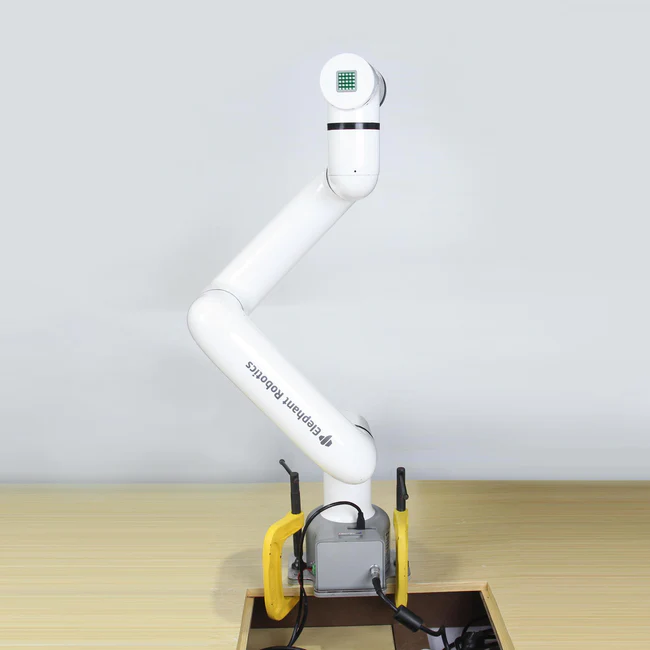
開(kāi)源六軸機(jī)械臂myCobot 280末端執(zhí)行器實(shí)用案例解析
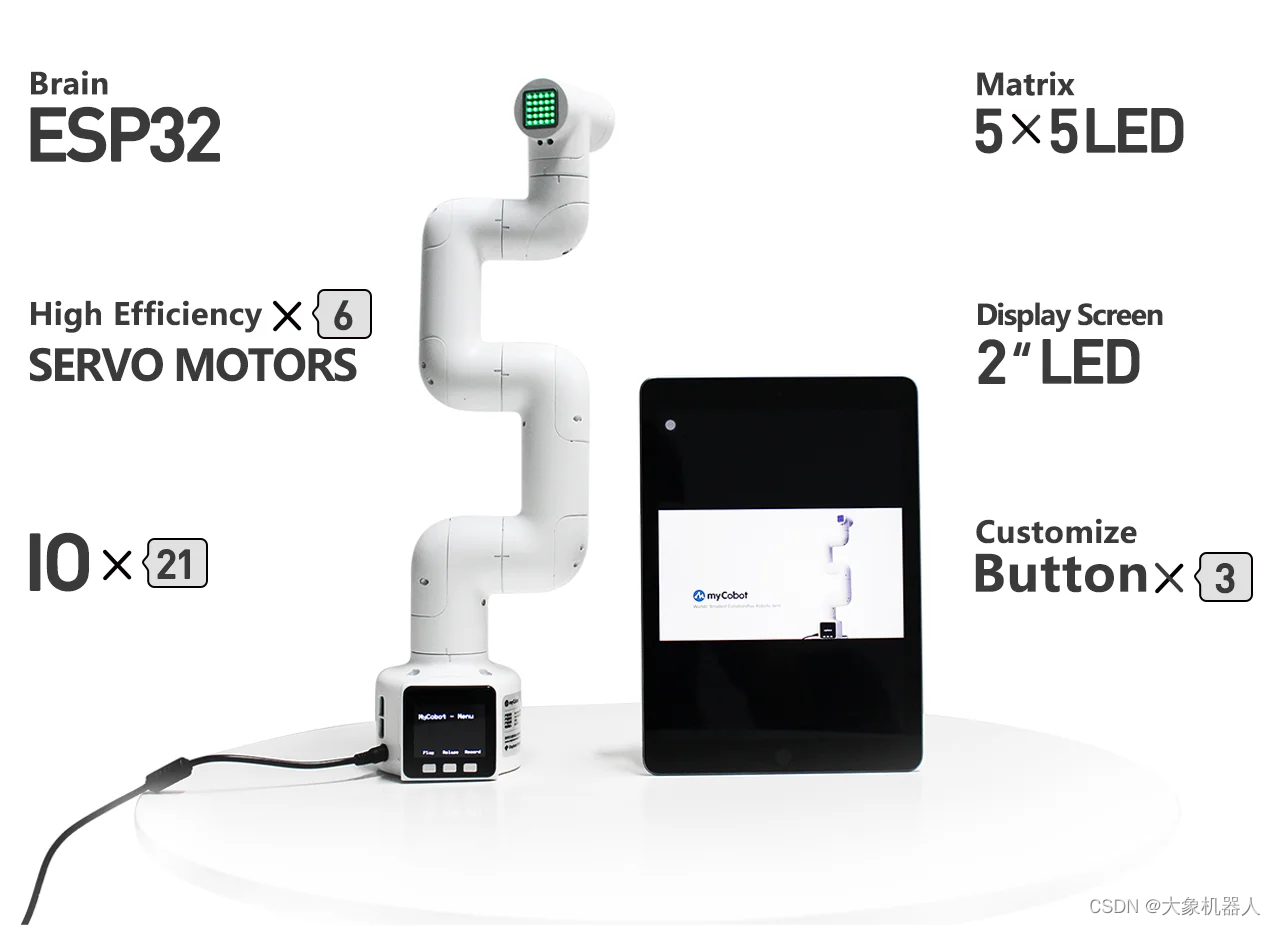
在Mac上使用Docker構(gòu)建noVNC環(huán)境并運(yùn)行MyCobot
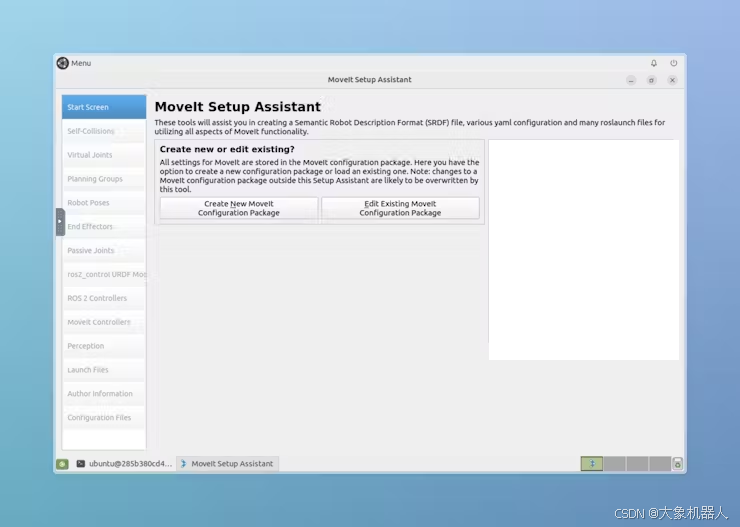
使用myCobot 280機(jī)械臂結(jié)合ROS2系統(tǒng)搭建機(jī)械分揀站





 使用myCobot 280 Jeston Nano進(jìn)行物體精確識(shí)別追蹤
使用myCobot 280 Jeston Nano進(jìn)行物體精確識(shí)別追蹤
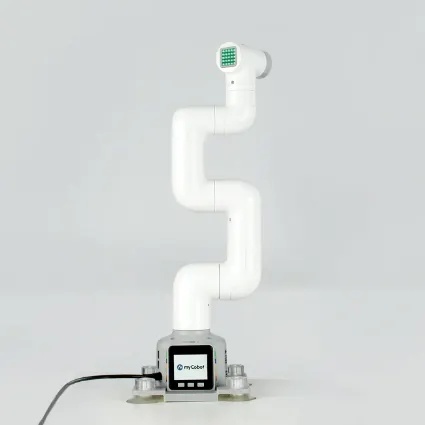










評(píng)論